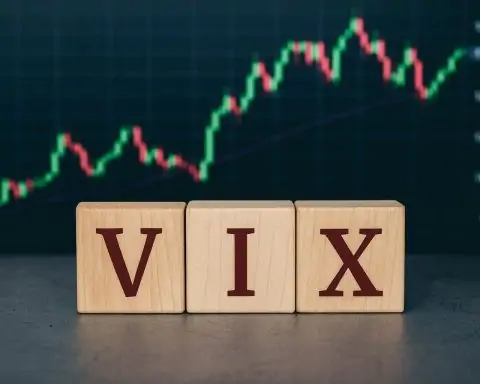- ETH Holds the Line: Ethereum hovered near $4,374 on September 5, 2025 after a volatile intraday swing from about $4,428 down to $4,269 and back up [1]. The price was up roughly 0.3% over the past 24 hours [2], consolidating below a key $4,500 resistance level.
- Jobs Data Jitters: Traders braced for the U.S. August jobs report (Nonfarm Payrolls) due that day, expecting it to catalyze a breakout. Analysts noted a weak report could boost ETH toward $4,500–$4,600, while a strong report might send it back toward $4,200 support [3] [4].
- Mixed On-Chain Signals: Long-term holders appeared to take profits at these prices (on-chain “Coin Days Destroyed” spiked to a 2-month high [5]), even as exchange balances hit historic lows. Major players accumulated: Shanghai’s Yunfeng Financial bought 10,000 ETH (~$44 M) this week [6] and crypto fund Bitmine added 54,937 ETH (~$237 M) [7], reflecting high conviction.
- Ethereum Lags Bitcoin: Ethereum’s weekly performance was flat-to-slightly negative (~–0.9% over 7 days [8]), underperforming Bitcoin, which rose ~2% and rallied above $112,000 [9]. Crucially, ETH-focused ETFs saw nearly $800 M in net outflows during the first week of September [10], even as BTC ETFs attracted inflows – a sign that institutions were rotating into Bitcoin’s “blue-chip” status [11] [12].
- Regulatory Tailwinds: U.S. regulators struck an optimistic tone. On Sept 5, the SEC and CFTC issued a joint statement pledging coordinated oversight of spot crypto trading [13]. The SEC even unveiled plans to clarify crypto rules for token issuance and exchange trading [14]. While formal approvals (like a spot ETH ETF) remained pending, these moves hinted at a more crypto-friendly framework ahead.
- Ecosystem Trends: Ethereum’s network fundamentals stayed robust. It still accounts for about 68% of all DeFi value locked (over $100B by late September) [15], underscoring its dominance in decentralized finance. NFT markets cooled – September’s NFT sales volume dropped ~25% from August, with Ethereum NFT trading down over 50% [16] [17] – but new layer-2 activity surged. Coinbase’s Base L2 saw an explosive 1000% jump in NFT transactions in September thanks to a popular blockchain game [18] [19], highlighting user migration to cheaper, faster networks. Analysts say such growth in NFTs and DeFi on Ethereum’s layers strengthens ETH’s long-term value proposition.
Ethereum Price Performance on September 5, 2025
Ethereum’s price showed resilience on September 5, trading in the mid-$4,000s and stabilizing above $4,300 by day’s end. During Friday’s session, ETH ranged from a low near $4,269 to a peak of roughly $4,428, before settling around $4,374 in the afternoon [20]. This choppy movement left ETH only modestly higher (+0.3%) compared to the prior day [21], reflecting a sideways consolidation after the week’s earlier volatility. In fact, just two days prior, Ethereum had briefly surged above $4,900 – a level close to its summer highs – before retracing [22]. The pullback into the low-$4,000s brought ETH back into its recent trading range, indicating that bulls and bears were nearing a stalemate by September 5.
On a weekly basis, Ethereum was roughly flat. It traded only about 1% higher than a week ago, essentially moving sideways with low volatility [23]. By contrast, its one-month performance remained impressive at +21%, thanks to a strong rally over the summer [24]. This means that despite the short-term pause, ETH was still significantly up in the broader timeframe, even outperforming Bitcoin over the past month (BTC was slightly down monthly) [25]. Ethereum’s ability to hold above the psychologically important $4,000 level during late August and early September signaled a consolidation of its summer gains. According to a CryptoPotato analysis, ETH spent mid-August through early September “stuck in a large range” between approximately $4,000 support and $5,000 resistance [26]. The $4,000 floor was already tested and held in recent weeks, giving bulls confidence, while the $5,000 ceiling loomed overhead as the next major hurdle [27].
By September 5, Ethereum appeared to be basing just below $4,500, potentially gearing up for its next major move. Intraday, every attempt to push above the mid-$4,400s met seller resistance, but dips toward $4,300 or below were quickly bought. This equilibrium reflected falling trading volumes and muted volatility, typical of a market waiting for a catalyst [28]. “Ethereum continued to move sideways, with its price only 1% higher than last week. This flat trend is characterized by falling volume and low volatility,” CryptoPotato noted in its September 5 market update [29]. Such calm price action was not expected to last indefinitely. Analysts viewed the consolidation as a healthy pause after Ethereum’s significant summer rally. As long as key support held, many believed ETH was primed to resume its uptrend. “Once this pause is over, buyers have a good chance to regain control and take ETH into price discovery beyond $5,000,” the CryptoPotato report added optimistically [30].
Macroeconomic News and Market Drivers
Macroeconomic events on Sept 5 weighed on traders’ minds, even if Ethereum’s price was steady. In particular, the U.S. August Nonfarm Payrolls report was set for release that Friday morning, making it a pivotal data point for all markets. Crypto investors were closely watching this jobs report because of its implications for Federal Reserve policy. Leading into the release, signs of a cooling economy had bolstered expectations that the Fed might cut interest rates at its upcoming meeting. Bitunix analysts noted that markets were “almost certain the Federal Reserve will cut rates in September” given recent soft economic indicators. A rate cut would typically be bullish for risk assets like crypto, by easing financial conditions.
However, there was a caveat: “a surprisingly strong report could undermine dovish positioning, pushing U.S. Treasury yields and the dollar higher,” the Bitunix team warned. In that scenario, more robust job growth would reduce the Fed’s urgency to ease policy, potentially hurting crypto in the short term. Thus, Friday’s jobs data was seen as a binary catalyst for Ethereum’s next move. As Bitunix summarized, “Nonfarm payrolls will be the most important data release ahead of the September Fed decision… [it] will act as the catalyst for a directional breakout [for ETH].” A weaker labor report could embolden ETH to test its upper price range (above $4.5K), whereas stronger data might send it back toward lower support levels.
Broader market sentiment on Sept 5 was one of cautious optimism, as evidenced by movements in stocks and other assets. By that afternoon, U.S. equity indices were modestly higher for the week – the S&P 500 and Nasdaq both rose nearly 1% on Thursday alone [31] – reflecting hopes of a Goldilocks scenario (cooling economy, but not a hard landing). Bitcoin’s price action also indicated a “risk-on” tone: BTC had climbed back above $110,000 and was moving in tandem with gold’s upswing (gold hit record highs ~$3,500/oz) as a hedge against economic uncertainty. Bitcoin’s strength often lends support to Ethereum and other altcoins. Indeed, crypto market sentiment ticked up into neutral territory after spending time in “fear” mode. On Sept 5, the Crypto Fear & Greed Index stood at 41 (neutral), up from extreme fear levels seen in prior months [32]. While mild anxiety persisted – the index had actually dipped from 44 the day before, reflecting lingering wariness – overall sentiment was far from panic [33].
One reason for tempered optimism was the evolving narrative around crypto ETFs and institutional adoption. Early that week (right after the U.S. Labor Day holiday), there were strong inflows into newly launched spot Bitcoin ETFs, a sign of mainstream investor demand [34]. But by Thursday and Friday, flows had reversed: U.S. Bitcoin ETFs saw ~$227M of outflows on Thursday [35], and Ethereum ETFs bled another ~$167M that same day [36]. These outflows suggested some large investors were reducing exposure ahead of the jobs report or reallocating funds. Still, the net flow for Bitcoin ETFs remained positive for the week (+$410M over Tue–Thu) [37], whereas Ethereum funds ended the week deeply negative (roughly –$341M Tue–Thu, accelerating to nearly –$800M including Friday) [38] [39]. This divergence implied a short-term rotation from ETH to BTC among institutional players, possibly due to Ethereum-specific uncertainty (such as regulatory delays for an ETH ETF or profit-taking after ETH’s big summer rally).
Notably, labor market data and Fed expectations were not just abstract forces – they had real effects on crypto price levels. As Sept 5 progressed, traders seemed to take a defensive stance until the employment numbers were out. When the jobs report finally hit (showing an economic slowdown per forecasts), it likely reinforced the case for a Fed rate cut, which in turn helped Ethereum hold its ground above support. By closing time Friday, ETH was still in the $4.3–4.4K zone, suggesting the data caused no severe shocks. In summary, macroeconomic developments on that day played a pivotal role in shaping short-term market sentiment. Ethereum traders were effectively “on pause” awaiting confirmation that monetary policy would remain favorable – a narrative that largely played out as hoped, keeping crypto markets stable into the weekend.
Analyst Commentary and Price Predictions
Amid Ethereum’s range-bound price action on Sept 5, crypto analysts and industry experts offered a mix of short-term forecasts and long-term outlooks for ETH. Technical analysts pointed to well-defined support and resistance zones that could determine Ethereum’s next directional move. U.Today’s market analyst Denys Serhiichuk observed that on the hourly chart, ETH had established a local resistance around $4,428 [40]. If the daily candle were to close above that level (ideally without a long wick), Serhiichuk noted it “may open the door for further growth into the $4,500 range by the end of the week.” [41] In fact, by the time of writing that afternoon, Ethereum was trading near $4,478 [42] – already above the cited resistance – indicating buyers were attempting to “get back in the game” after the morning dip [43]. The implication was that a strong daily close could confirm a bullish breakout, targeting ~$4.5K in the very near term.
On the flip side, some analysts urged caution due to signs of profit-taking. Research from CoinCentral highlighted that long-term holders (LTHs) were selling into the recent strength, which historically can foreshadow short-term price weakness. One metric, the LTH Net Unrealized Profit/Loss (NUPL), had reached around 0.65, a threshold where “seasoned investors are booking profits at current levels” and rallies often stall [44] [45]. Correspondingly, the Coin Days Destroyed metric for Ethereum (which spikes when older coins finally move) hit its highest level in two months, confirming that some veteran holders were cashing out after ETH’s summer run-up [46]. This dynamic was “creating headwinds for near-term recovery,” as CoinCentral put it, keeping ETH “capped below $4,500” resistance with strong support noted around $4,222 [47] [48].
Despite these mixed short-term signals, many experts remained bullish on Ethereum’s broader trajectory. The general consensus was that Ethereum was in a consolidation phase that would eventually resolve upward. As mentioned, CryptoPotato’s Sept 5 analysis emphasized that ETH’s weeks-long sideways grind was likely a prelude to another leg higher. With Ethereum stuck between $4K and $5K since mid-August, “buyers and sellers [were] battling for dominance” [49]. CryptoPotato identified $5,000 as “the most important resistance” ahead, predicting that once momentum returns, ETH has a good chance to enter price discovery beyond $5K (i.e. new all-time highs) [50]. This optimistic view hinged on the notion that Ethereum’s fundamentals – from network usage to investor demand – were robust (more on those fundamentals below), implying that the current lull was merely a healthy reset before continuation of the bull trend.
Some analysts even projected dramatic upside by year-end. A report by MarketForces on Sept 5 quoted Joao Wedson, CEO of Alphractal, noting an unprecedented bullish on-chain signal: Ethereum’s Exchange Flux Balance turned negative for the first time ever [51]. In plain terms, more ETH was being withdrawn from exchanges than deposited, indicating investors were moving coins into long-term storage. This “reduced selling pressure” is “generally seen as a bullish signal” and could “potentially support ETH price growth,” Wedson explained [52]. Citing this trend and continued big-money accumulation, the MarketForces piece confidently stated that Ethereum’s price is expected to rise to $10,000 and above before the year runs out [53]. That ambitious target – roughly double the current price – reflects the belief by some market participants that 2025 could see a parabolic finale if macro conditions and adoption trends stay favorable.
Of course, not every prediction was so lofty. Near-term forecasts were more measured, generally calling for Ethereum to grind higher but face challenges around its all-time high region ($5k). For example, BeInCrypto’s September outlook (published a few days prior) suggested ETH could have a “choppy” month unless bulls reclaim ~$4,579 resistance decisively, warning of possible retracements to ~$4,156 if momentum falters. And looking beyond Ethereum itself, some analysts recommended keeping an eye on competing chains and new projects that might outpace ETH’s percentage gains in the short run. (Indeed, smaller altcoins and novel tokens were seeing bursts of speculative interest, though Ethereum’s sheer size and blue-chip status meant it wasn’t expected to skyrocket overnight without major catalysts.)
In summary, analyst commentary on Sept 5 ranged from cautiously optimistic to outright euphoric. There was broad agreement that Ethereum’s uptrend remained intact – with $4K proving a solid base – but also acknowledgement of interim hurdles at ~$4.5K and ~$5K. “In the near term, ETH traders should closely watch the $4,250 support and whether the $4,500 resistance is decisively breached,” advised the Bitunix analysts [54]. That succinctly captured the key levels on everyone’s radar. The day’s relatively small price moves belied the growing tension: Ethereum was coiled up, and the next batch of news (be it economic data, regulatory decisions, or tech updates) would likely trigger a significant move. Bulls clearly had the medium-term edge, but patience was necessary as the market worked through short-term seller supply.
Regulatory Developments and Government Signals
Regulatory news on and around September 5, 2025 provided a surprising dose of encouragement for the crypto market, a stark contrast to the uncertainty of previous years. On that very day, the two top U.S. market regulators – the Securities and Exchange Commission (SEC) and the Commodity Futures Trading Commission (CFTC) – issued a rare joint statement signaling a new era of cooperation on crypto oversight [55]. This joint staff statement addressed the treatment of certain spot crypto assets and essentially marked “the end of the ‘who’s in charge?’ era” of U.S. crypto regulation [56]. By aligning their definitions and playbooks, the SEC and CFTC aimed to provide clearer guidance to exchanges and brokers dealing in cryptocurrencies [57]. For Ethereum and other major coins, this alignment is a positive sign: it suggests that future regulation will be more coordinated and coherent, reducing the conflicting messages that often plagued the industry. As Metal Pay’s news digest put it, “harmonized rules should translate into simpler, safer on-ramps [for crypto investors] and less regulatory whiplash.” [58]
In addition to that, the SEC made headlines by including digital assets in its rulemaking agenda for the first time. According to a Reuters-sourced report, the SEC on Sept 5 unveiled proposals for new rules governing how crypto assets can be issued, traded, and handled by broker-dealers [59]. In plain English, the Commission is finally moving toward writing explicit regulations for crypto, rather than relying solely on enforcement actions or court rulings. These proposals even contemplate ways that certain crypto tokens might trade on traditional stock exchanges in the future [60] – a remarkable development that could make buying crypto as easy as buying a stock in a brokerage app. While these were just preliminary proposals (not yet law), it’s a constructive signal welcomed by banks, fintech firms, and everyday investors who have been waiting for a consistent U.S. framework [61]. The timing of this agenda suggests that U.S. policymakers were feeling pressure to modernize rules in light of the growing acceptance of crypto (e.g. multiple ETF applications, Wall Street interest, etc.).
Such regulatory momentum was a boon to market sentiment on Sept 5. After years of ambiguity, the U.S. seemed to be taking concrete steps toward embracing crypto within the regulatory perimeter. This likely contributed to Ethereum’s price stability – traders did not have to fear an imminent crackdown; if anything, the trajectory was toward approval of new products (like ETFs and perhaps even new trading venues for crypto). It’s worth noting that just a day earlier (Sep 4), news broke that an ETF issuer filed plans for what could be the first Dogecoin ETF in the U.S., with hints of others (XRP, SOL, even a “Trump” meme token) potentially in the pipeline [62]. Bloomberg analyst Eric Balchunas commented that Dogecoin might actually become the first of these novel ETFs to hit the market under the SEC’s Investment Company Act framework [63]. While not directly related to Ethereum, this highlights the shifting regulatory climate – one suddenly more receptive to crypto-based financial products.
That said, regulatory uncertainty had not completely vanished. Ethereum’s slight underperformance relative to Bitcoin in early September was partly attributed to the ongoing wait for a U.S. spot ETH ETF approval. The SEC had delayed or not yet approved any Ethereum spot ETFs by that point, even as it allowed several Ether futures ETFs earlier. This caution was evident in the ETF flow data: late in the month of September, when the SEC pushed back decision deadlines for spot crypto ETFs, Ethereum funds saw a wave of redemptions (about $795M in outflows in late September alone as institutions grew impatient) [64]. So while Sept 5 brought encouraging news, the market was still navigating a regulatory gray area with regard to actually launching key retail investment products tied to ETH. Moreover, no major legislative breakthroughs occurred that week – for instance, U.S. Congress was preoccupied with budget debates (indeed a government shutdown loomed by October), leaving comprehensive crypto legislation on the backburner.
Outside the U.S., there weren’t any big Ethereum-specific government statements on that date. However, the global trend remained that jurisdictions were gradually clarifying crypto rules. The EU’s comprehensive MiCA regulation had been signed earlier in 2025, and countries like the UK, UAE, and Singapore were actively courting crypto business with clear guidelines. Such developments often indirectly influence Ethereum’s outlook by fostering greater mainstream participation.
In summary, September 5, 2025 marked an inflection point of sorts for crypto regulation: U.S. regulators signaled they want to work together and provide clarity, rather than continue the turf wars and ad-hoc enforcement of the past. For Ethereum, which underpins a huge swath of the crypto ecosystem (DeFi, NFTs, etc.), this was a bullish macro development. Greater regulatory clarity could pave the way for more institutional investment and integration of ETH into traditional finance. The market’s reaction was not an immediate spike (these were longer-term signals), but the news certainly helped underpin confidence in Ethereum as a legitimate asset class moving forward.
On-Chain Metrics and Institutional Activity
Blockchain data and institutional investment trends around September 5 painted a picture of an Ethereum network in high demand, albeit with some short-term holder rotations. A standout metric, as mentioned, was the Exchange Flux Balance for ETH turning negative for the first time in Ethereum’s history [65]. What this means is that, cumulatively, more Ether was being withdrawn from exchanges than deposited over time – a sign that holders preferred to self-custody or stake their ETH rather than leave it on trading platforms. Analysts interpret a negative exchange netflow as a bullish indicator because it suggests reduced available supply for sale. Investors moving coins off exchanges are typically long-term oriented (they might be storing in hardware wallets or locking in DeFi/staking), which reduces immediate selling pressure [66]. Indeed, both Ethereum and Bitcoin were seeing this trend in 2025: “billions of dollars in BTC are also flowing out of exchanges,” noted the MarketForces report [67]. For Ethereum, this shift was hailed by some as evidence of “high conviction in the future of Ethereum” among serious investors [68].
Corroborating this, whale wallets and institutions were actively accumulating ETH on dips. On-chain analytics highlighted that the number of large Ethereum addresses (holding over 10,000 ETH) had surged past 1,150 in 2025, reaching levels not seen since the last bull market [69]. In late August and early September, several big players made headlines with sizable purchases. For example, Yunfeng Financial – a Shanghai-based firm affiliated with Alibaba co-founder Jack Ma – purchased 10,000 ETH (worth ~$44 million) during the week, as reported on Sept 5 [70]. Additionally, crypto investment fund Bitmine continued what was described as an “accumulation spree,” adding 54,937 ETH (~$237 million) to its holdings around that time [71]. Such aggressive buying by institutions and whales typically signals that smart money views current prices as attractive. It also mirrors behavior from past cycle inflection points: in previous bull runs, whale accumulation often preceded major upside moves [72].
To put it simply, large stakeholders were “buying the dip” when Ethereum pulled back from ~$4.9K to the low-$4Ks in early September. Lookonchain data cited by Cryptonews showed nine new whale addresses collectively bought $456.8M worth of ETH in late August, and even just in a single day, newly created wallets scooped up 35,948 ETH (~$164M) within eight hours [73]. Observers noted transactions like 34,000 ETH withdrawn from Binance and deposited into Aave by two new wallets as signs that big investors were moving into DeFi positions rather than leaving funds on exchanges [74]. This ties back to the exchange outflow theme and also indicates confidence in earning yield on ETH (Aave is a lending protocol, so likely these whales were deploying ETH to earn interest or facilitate loans).
However, not all on-chain signals were unequivocally bullish. As mentioned, certain indicators showed long-term holders taking some profit at these price levels. Glassnode’s long-term holder metrics (like LTH-NUPL and CDD) suggested that a subset of veteran ETH holders who bought much lower were now trimming their positions for the first time in months [75] [76]. The spike in Coin Days Destroyed (CDD) was particularly notable – it meant coins that hadn’t moved in a long time were suddenly on the move to exchanges or other addresses, likely to be sold [77]. This often happens when the market reaches a price range that long-term hodlers consider “good enough” to realize gains. CoinCentral reported that this profit-taking contributed to Ethereum’s rally stalling around $4.3–$4.4K in that first week of September [78]. Essentially, while new whales were entering, some old whales were cashing out, creating a supply-demand equilibrium that kept ETH below $4.5K for the moment.
Another notable trend was the role of corporate and institutional treasuries in Ethereum. It’s not just crypto-native funds; public companies were also accumulating Ether as a strategic asset. By early September, public companies held roughly 2.97% of the total ETH supply in their treasuries (valued around $15.5 billion) [79] [80]. This is a significant chunk, showing that ETH is increasingly seen as a treasury reserve asset, similar to how companies like MicroStrategy hoarded Bitcoin. Such adoption adds a layer of support to the market – these entities are typically long-term holders, not flippers, providing a steady demand floor.
Finally, turning to the Ethereum network itself, one of the most bullish on-chain stories of 2025 has been staking. After the completion of Ethereum’s Proof-of-Stake upgrade (and the enabling of withdrawals earlier in 2025), participation in staking surged. By September, the portion of ETH supply staked in the network exceeded 30% [81]. This means nearly one-third of all ETH is locked up earning yield, further reducing liquid supply. Staking not only offers investors a passive return (which was attracting institutions and retail alike), but it also strengthens the network’s security. High staking rates indicate confidence in Ethereum’s future because those coins are committed long-term. It also introduces a “yield floor” – investors might be less inclined to sell ETH when they can earn, say, 5% annual yield by staking, unless prices overshoot substantially.
In sum, on-chain and institutional metrics around Sept 5 were bullish beneath the surface. Exchange outflows, whale accumulation, and high staking participation all pointed to a strong fundamental demand for ETH. The only near-term caution flag was profit-taking by some long-term holders, which is a normal occurrence as prices climb. With institutions like ETFs temporarily selling (as evidenced by ETF outflows) but other institutions buying directly, Ethereum’s supply was effectively changing hands from shorter-term speculators to longer-term believers. This kind of rotation often precedes the next major price expansion phase, provided the broader conditions remain positive.
Ethereum vs. Other Major Cryptocurrencies
During the first week of September 2025, Ethereum’s performance could be described as steady but unspectacular compared to a surging Bitcoin. By Sep 5, Bitcoin (BTC) was stealing the limelight with a push above the $110,000 mark – a level that puts BTC near all-time highs and represented a ~2% weekly gain [82]. In the past 24 hours alone, Bitcoin was up about 1.9% (the largest increase among top coins) and trading around $112,672 [83]. Ethereum, in contrast, was up just 0.3% on the day and basically flat on the week [84] [85]. Its price of ~$4.3–4.4K, while impressive in context of the year’s rally, meant ETH had not yet reclaimed its own all-time high (~$4,865 set in late 2021) whereas Bitcoin had decisively broken into uncharted territory. This relative underperformance of ETH vs BTC was reflected in market dominance: Bitcoin’s share of total crypto market cap in early September was inching upward (around 58–59%), while Ethereum’s dominance was a bit subdued.
The rotation into Bitcoin was driven by a few factors: ETF optimism (Bitcoin spot ETF approvals were anticipated sooner than Ethereum’s), macro hedging (BTC viewed as “digital gold” amid economic uncertainty), and simply momentum – BTC was leading the market, so fresh capital tended to flow there first. Some analysts framed it as “Bitcoin acting as the blue-chip, Ethereum as the runner-up” in that period [86] [87]. Indeed, U.S. Ethereum ETFs saw outflows (profit-taking) while Bitcoin ETFs still had inflows, as noted earlier, reinforcing this narrative of BTC being slightly favored by institutions at the moment [88].
Comparisons with other major altcoins showed that Ethereum was not alone in cooling off. For example, Solana (SOL) – often dubbed an “Ethereum competitor” – was also relatively soft in that week. Solana’s price slipped about 1% over the week [89], similar to ETH’s –0.9% weekly move, indicating both were consolidating after prior gains. Other large caps presented a mixed bag: Ripple’s XRP was hovering around $2.80–2.90, up a tiny ~0.2% on Sept 5 [90] as it faced its own news (ongoing legal resolution buzz). Cardano (ADA) and Binance Coin (BNB) likewise were mostly flat to slightly up, riding on broader market stability. CryptoPotato’s September 5 analysis noted that Cardano closed that week with a modest 1% gain, reflecting low volatility just like ETH [91], while BNB was unchanged and consolidating below its recent high of ~$900 [92].
One standout was that Tron (TRX) actually dipped a bit (–0.4%) on Sept 5 [93], making it the only top-10 coin in the red that day. Tron’s minor decline was trivial in magnitude but notable since almost every other major coin was flat or slightly up. This suggests some idiosyncratic selling or maybe rotation out of TRX into other assets. Meanwhile, smaller altcoins and meme coins continued to show volatility independent of ETH – for instance, a meme token called MemeCore (M) jumped 41% that day, and Pump.fun (PUMP) token rose 9% [94], highlighting that pockets of exuberance persisted in the crypto market. These did not directly impact Ethereum but indicate the speculative capital swirling around.
It’s also instructive to look at Ethereum’s performance relative to Bitcoin over longer horizons. As of Sept 5, Ethereum had outperformed Bitcoin over the past month (ETH +21% vs BTC slightly negative over 30 days [95]). However, year-to-date or multi-month, Bitcoin was the one hitting new highs and dragging the market upward. So in many respects, the two biggest cryptocurrencies were taking turns leading: Bitcoin’s surge to six figures set the stage, and Ethereum was expected by many to follow suit in due time (perhaps testing its own record highs above $5K). A key point is that their correlation remained fairly high – on macro news like the Fed or jobs data, BTC and ETH moved in sync directionally, even if magnitudes differed. Also, positive developments for one often boded well for the other (e.g. SEC’s warming stance on crypto ETFs was good for both BTC and ETH in the big picture).
Beyond price, Ethereum vs. Bitcoin also invites comparison in usage and narrative. Bitcoin’s narrative in late 2025 was heavily about “digital gold” and institutional treasury adoption, as evidenced by publicly traded firms collectively holding over 1,000,000 BTC (5% of supply) for the first time [96]. Ethereum’s narrative was more about “digital oil” – fueling an entire ecosystem of applications (DeFi, NFTs, etc.), which Bitcoin largely does not do. Thus, Ethereum often found support from different quarters – for instance, developers and tech companies building on Ethereum’s platform, as opposed to just investors buying it as a store of value. This distinction came into play during the NFT and DeFi trends (discussed next).
In conclusion, Ethereum may have lagged Bitcoin slightly on Sep 5, but it remained the clear number two crypto asset, far ahead of others in market cap and influence. Its brief underperformance appears to be more of a short-term rotation than any fundamental flaw. In previous cycles, it’s common to see Bitcoin rally first to new highs, then Ethereum catch up (often with even larger percentage gains) once capital rotates into the altcoin market. Many market watchers expected a similar pattern in late 2025: BTC’s six-figure surge could soon be followed by ETH making a run at its own all-time high and beyond. For now, Ethereum was biding its time, letting Bitcoin lead – but still holding strong and maintaining the lion’s share of activity in the crypto economy.
Ethereum’s NFT, DeFi, and Layer-2 Ecosystem Trends
Apart from price action, September 5, 2025 was also a moment to assess key trends in Ethereum’s broader ecosystem – particularly NFTs, DeFi, and layer-2 networks – which are integral to Ethereum’s value proposition. The picture in early September was one of transition and maturation in these sectors.
NFTs (Non-Fungible Tokens): The once-red-hot NFT market had cooled considerably by September 2025 compared to its frenzy a year or two prior. Overall NFT sales volume in September was down about 25% from August, indicating a significant pullback in trading activity [97]. Ethereum, historically the largest NFT blockchain, saw an even sharper decline in NFT sales by value – Ethereum’s NFT trading volume fell 54% month-over-month [98]. Blue-chip collections that symbolized the 2021 NFT boom were struggling: for instance, CryptoPunks and Bored Ape Yacht Club (BAYC) saw their trading volumes plummet by 50–60% in September [99]. Even newer hyped collections weren’t immune; top performer Courtyard (on Polygon) led in sales but still experienced a 25% decline in volume [100]. These drops underscore a broad NFT market slump, likely due to a combination of factors: waning speculative interest, higher-profile collectors taking a step back, and the general rotation of capital towards “safer” crypto assets like BTC.
However, it wasn’t all bearish for NFTs. A fascinating counter-trend emerged on Ethereum’s layer-2 networks. In particular, Coinbase’s Base network – an Ethereum Layer-2 launched in 2023 – suddenly became an NFT hotspot. In September 2025, Base recorded a staggering 1.27 million NFT transactions, an over 1000% increase from the previous month [101] [102]. This explosion in activity was largely driven by a hit blockchain game called DX Terminal, which runs on Base. Unlike traditional NFT projects that emphasize financial speculation (like hoping the NFT’s price will moon), DX Terminal offered pure entertainment and gameplay value, with AI-driven characters and no promise of real-world profit [103] [104]. Ironically, by removing the get-rich-quick element, the game managed to attract and retain users who were there for fun – leading to huge transaction counts as players traded and interacted with game NFTs. Base’s success here is notable: while Ethereum mainnet and Polygon still dominated in total NFT trading value (dollar volumes) [105] [106], Base leapfrogged them in terms of sheer user engagement and transaction count.
The implications are twofold. First, Ethereum’s ecosystem is diversifying – user activity is migrating to L2 solutions for benefits like low fees and faster throughput. Base leveraged Coinbase’s user-friendly on-ramp and cheap transactions to carve out a niche in NFT gaming [107]. This suggests Ethereum’s scalability via L2s is bearing fruit: rather than Ethereum losing relevance, its L2s are extending its reach. Second, the nature of NFT demand is evolving. “Interactive gaming projects are showing remarkable resilience in an otherwise bearish [NFT] market,” as one analysis noted [108]. People want NFTs with utility and entertainment, not just static JPEGs. This paradigm shift – from static collectibles to dynamic, utility-driven NFTs – could redefine what drives value in the NFT space moving forward [109]. Ethereum, thanks to its programmability and network effects, is well-positioned to support these new use cases (especially via L2s where it’s cheaper to experiment and play).
DeFi (Decentralized Finance): Ethereum has long been the home of DeFi, and that remained true in September 2025. By late month, the total value locked (TVL) in Ethereum-based DeFi surpassed $100 billion, reaching its highest levels since early 2022 [110]. Ethereum’s share of overall DeFi TVL was roughly 68%, dwarfing any single competitor chain [111]. This dominance reflects that despite many “Ethereum killers” and multi-chain alternatives, the bulk of serious DeFi liquidity and activity still resides on Ethereum (and its Layer-2 extensions). In early September, capital flows in DeFi saw interesting rotations: with the macro outlook improving (Fed cutting rates mid-month as it turned out), investors began seeking higher yields and opportunities in DeFi protocols. Sectors like perpetual DEXs (decentralized derivatives) and real-world asset tokenization were gaining momentum [112] [113]. For instance, decentralized perpetual trading platforms (some on Ethereum, some on L2s or other chains) experienced a surge, and tokens related to those saw explosive growth (names like ASTER, AVNT were mentioned with triple-digit gains in Finestel’s report) [114].
One standout Ethereum DeFi project was Pendle, a protocol for tokenized yield (fixed-income DeFi). Pendle’s TVL hit $6.94B in September, reflecting a strong appetite for fixed yield products in crypto [115]. This is notable because it indicates DeFi is expanding beyond just trading and into more sophisticated financial services akin to bonds or money markets. Ethereum’s role in enabling tokenized Real-World Assets (RWA) also grew – platforms like OpenTrade and Maple were issuing tokenized bonds and credit products on Ethereum [116]. These integrations hint at Ethereum becoming an infrastructure for traditional finance crossover, which can be a huge market.
Moreover, Ethereum’s staking mechanism (while not traditionally classified as “DeFi”, it’s part of on-chain finance) continued to attract participants. With over 30% of ETH staked and liquid staking derivatives (LSDs) like Lido’s stETH flourishing, staking has become a cornerstone of Ethereum’s economy [117]. Yields from staking (and LSD protocols) have been one reason institutions cite for holding ETH beyond just price appreciation – it’s an asset that generates cash flow in crypto terms, which is appealing.
Layer-2 Networks: We’ve touched on Base’s success, but broadly, Ethereum layer-2 scaling solutions (such as Arbitrum, Optimism, Base, zkSync, and others) were booming in 2025. These L2s help offload transactions from the Ethereum mainnet, offering lower fees and faster confirmations while relying on Ethereum for security. By September, billions of dollars were bridged to L2s and these networks had thriving DeFi and gaming ecosystems of their own. For example, Arbitrum and Optimism each had multiple billion in TVL and were hosting some of the top decentralized exchanges and lending platforms. The widespread usage of L2s is a trend where users often don’t even realize they’re interacting with Ethereum, but they are – under the hood. This is crucial: Ethereum’s scalability problems were long a criticism, but L2 adoption showed a viable path to scaling without losing decentralization.
One metric to illustrate L2 adoption is that Base placing five collections in the top 10 NFT activity rankings by transactions [118] – something unimaginable a year prior when almost all NFT action was on Ethereum L1 or Solana. Now, L2s like Base (and others like Immutable X for gaming NFTs, or Polygon’s chain) are taking significant share. Ethereum’s strategy of embracing a multi-chain, modular approach seems to be paying off. From the user’s perspective, whether they’re trading an NFT on Base, lending on Arbitrum, or swapping tokens on Optimism, they’re still within the Ethereum universe, which ultimately accrues value to ETH (via fees, burned ETH with EIP-1559, demand for ETH as gas, etc.).
Bringing it all together: the Ethereum ecosystem in early September 2025 showed signs of maturity. NFT speculation had cooled, but was giving way to more sustainable, utility-driven models (especially in gaming). DeFi had weathered past downturns and was reaching new heights in TVL, with innovative protocols offering everything from yield-bearing stablecoins to real-world asset lending. And layer-2 networks were delivering real scalability, onboarding masses of new users (some through novel apps like games) and keeping Ethereum at the center of crypto innovation. For the general public, what this means is that Ethereum isn’t just about the Ether price – it’s about an entire economy of decentralized apps and assets that’s flourishing. These trends bolster the fundamental case for ETH: as the lifeblood (gas) of this ecosystem, demand for ETH is ultimately tied to the growth of NFTs, DeFi, gaming, and beyond on the platform. On September 5, 2025, that growth was very much in evidence, even if the market’s attention was temporarily fixated more on price consolidation and macro news.
Conclusion and Outlook
As of September 5, 2025, Ethereum stood at a crossroads of consolidation and anticipation. The day’s relatively unchanged price belied the flurry of activity beneath the surface – from U.S. regulators warming to crypto, to whales quietly accumulating millions in ETH, to gamers minting NFTs on layer-2 networks in record numbers. Ethereum’s price holding above $4,300 was a sign of strength, considering the market had absorbed profit-taking by some long-term holders and a rotation into Bitcoin during the week. With key supports intact (around $4,200) and major resistance ($4,500–$5,000) within sight, ETH appeared poised for a decisive move once the right catalyst arrived [119] [120].
Several catalysts were on the horizon. In the near term, the outcome of the Fed’s September meeting (and any interest rate cut) would likely set the tone for risk assets. By mid-September the Fed did initiate a rate cut, potentially spurring a risk-on wave that Ethereum could ride. Additionally, the crypto community was eagerly awaiting the SEC’s decisions on pending Bitcoin and Ethereum spot ETF applications. Any hint of approval – or even progress – on an Ethereum ETF could ignite significant inflows (the inverse of the outflows seen during delays) and boost sentiment. On the network side, Ethereum developers were continuing to improve scalability (proto-danksharding and other upgrades were in the pipeline), which in the long run would only enhance Ethereum’s utility and appeal.
Notable commentators are split on just how high Ethereum can go in this cycle, but many share the view that new all-time highs are a matter of “when, not if.” The year 2025 had already seen Ethereum reclaim and surpass levels that few thought possible during the bear market lows. If the macroeconomic winds stay favorable – e.g., inflation under control, tech innovation thriving – Ethereum stands to benefit as both a technological platform and an investment asset. Some bold predictions even target $8,000 to $10,000 ETH by the end of 2025 [121], riding on the wave of institutional adoption and the structural supply reductions from staking and EIP-1559’s burn mechanism. While such figures are speculative, they underscore a growing optimism: Ethereum is no longer seen as a fringe experiment but as a core part of the future financial system.
Of course, investors should remain cautious of risks: sudden regulatory setbacks, macro shocks, or smart contract vulnerabilities could introduce volatility. But as of September 5, the overall narrative was one of strength and building momentum. Ethereum had weathered regulatory crackdowns, macro scare stories, and even a major technological transition (the Merge to proof-of-stake) in the preceding years. It emerged from those tests with its status only enhanced – as evidenced by 68% DeFi dominance, tens of billions in NFT and gaming activity, and integration into mainstream finance [122] [123].
In conclusion, September 5, 2025 encapsulated a confident yet watchful moment for Ethereum. The price held firm, the community braced for the next leap, and the world at large began to acknowledge that Ethereum and its crypto peers are here to stay. For the general public, the takeaway is that Ethereum is not just about day-to-day price swings; it’s about an evolving ecosystem that is influencing how value and assets move in the digital age. As one chapter of consolidation closes and another chapter of expansion potentially begins, all eyes are on whether Ethereum can break above that $5,000 threshold and beyond – fulfilling the bullish prophecies of analysts and rewarding the conviction of those long-term holders who never lost faith in the power of this decentralized platform.
Sources: Ethereum price and market analysis [124] [125]; Analyst commentary on key levels [126] [127]; On-chain and institutional trends [128] [129]; Regulatory developments [130] [131]; NFT/DeFi ecosystem data [132] [133].
References
1. cryptonews.com, 2. cryptonews.com, 3. cryptonews.com, 4. cryptonews.com, 5. coincentral.com, 6. dmarketforces.com, 7. dmarketforces.com, 8. www.metalpay.com, 9. cryptonews.com, 10. coincentral.com, 11. www.metalpay.com, 12. www.metalpay.com, 13. www.metalpay.com, 14. www.metalpay.com, 15. coinlaw.io, 16. intellectia.ai, 17. intellectia.ai, 18. www.btcc.com, 19. www.btcc.com, 20. cryptonews.com, 21. cryptonews.com, 22. dmarketforces.com, 23. cryptopotato.com, 24. cryptonews.com, 25. cryptonews.com, 26. cryptopotato.com, 27. cryptopotato.com, 28. cryptopotato.com, 29. cryptopotato.com, 30. cryptopotato.com, 31. cryptonews.com, 32. cryptonews.com, 33. cryptonews.com, 34. www.metalpay.com, 35. cryptonews.com, 36. cryptonews.com, 37. www.metalpay.com, 38. www.metalpay.com, 39. coincentral.com, 40. u.today, 41. u.today, 42. u.today, 43. u.today, 44. coincentral.com, 45. coincentral.com, 46. coincentral.com, 47. coincentral.com, 48. coincentral.com, 49. cryptopotato.com, 50. cryptopotato.com, 51. dmarketforces.com, 52. dmarketforces.com, 53. dmarketforces.com, 54. cryptonews.com, 55. www.metalpay.com, 56. www.metalpay.com, 57. www.metalpay.com, 58. www.metalpay.com, 59. www.metalpay.com, 60. www.metalpay.com, 61. www.metalpay.com, 62. cryptonews.com, 63. cryptonews.com, 64. www.ainvest.com, 65. dmarketforces.com, 66. dmarketforces.com, 67. dmarketforces.com, 68. dmarketforces.com, 69. www.ainvest.com, 70. dmarketforces.com, 71. dmarketforces.com, 72. www.ainvest.com, 73. cryptonews.com, 74. cryptonews.com, 75. coincentral.com, 76. coincentral.com, 77. coincentral.com, 78. coincentral.com, 79. coincentral.com, 80. coincentral.com, 81. finestel.com, 82. www.metalpay.com, 83. cryptonews.com, 84. cryptonews.com, 85. www.metalpay.com, 86. www.metalpay.com, 87. www.metalpay.com, 88. www.metalpay.com, 89. www.metalpay.com, 90. cryptonews.com, 91. cryptopotato.com, 92. cryptopotato.com, 93. cryptonews.com, 94. cryptonews.com, 95. cryptonews.com, 96. cryptonews.com, 97. intellectia.ai, 98. intellectia.ai, 99. www.btcc.com, 100. www.btcc.com, 101. www.btcc.com, 102. www.btcc.com, 103. www.btcc.com, 104. www.btcc.com, 105. www.btcc.com, 106. www.btcc.com, 107. www.btcc.com, 108. www.btcc.com, 109. www.btcc.com, 110. coinlaw.io, 111. coinlaw.io, 112. finestel.com, 113. finestel.com, 114. finestel.com, 115. finestel.com, 116. finestel.com, 117. finestel.com, 118. www.btcc.com, 119. coincentral.com, 120. cryptonews.com, 121. dmarketforces.com, 122. coinlaw.io, 123. www.btcc.com, 124. cryptonews.com, 125. cryptonews.com, 126. u.today, 127. coincentral.com, 128. dmarketforces.com, 129. coincentral.com, 130. www.metalpay.com, 131. www.metalpay.com, 132. www.btcc.com, 133. coinlaw.io








